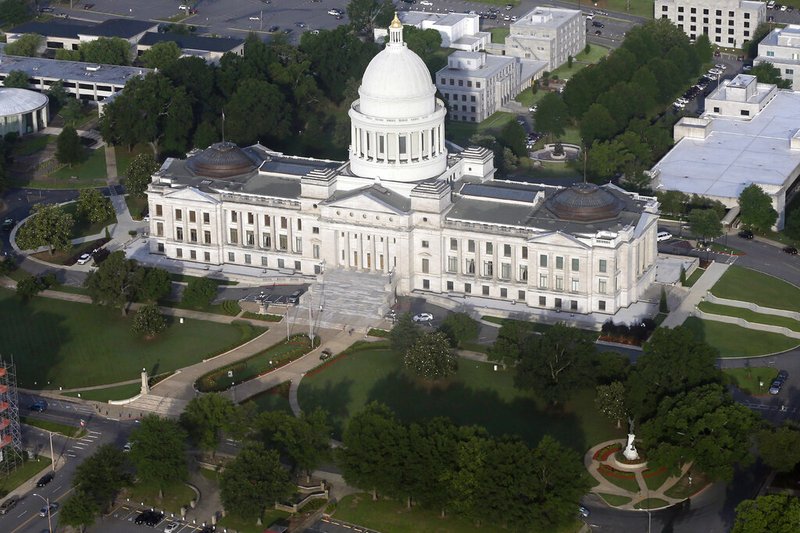An expansion to the Justice Building on the grounds of the state Capitol will provide much-needed office space and will also serve as a place of education for visitors young and old.
Construction has begun on the Justice Building expansion project, which will renovate about 3,000 square feet of existing space and add about 25,000 square feet of new space.
The $12.8 million project will expand the north and south wings of the existing building that houses the Arkansas Supreme Court Library, the Arkansas Court of Appeals and the Administrative Office of the Courts. The expanded areas will line up next to the Supreme Court Rotunda Building. The designers, AMR Architects of Little Rock and Brackett-Krennerich and Associates of Jonesboro, will be tasked with creating the facade for the expansion.
The project will add 10,000 square feet of meeting space and 7,500 square feet that will serve as a Capitol Grounds Visitor and Civics Education Center.
Chief Justice Dan Kemp said the project was approved by the Arkansas Supreme Court several years ago as part of the master plan for the Justice Building.
"However, it was only in the past year or so that it became feasible to revive the project," he said in an email Thursday. "During the summer of 2019, we began working with the Arkansas Development Finance Authority and the Division of Building Authority to review our existing bonds. We discovered that by refinancing the existing bonds we could save over $400,000 in interest expenses. At this point we concluded that the Judiciary was in a much better financial position to do this project than in 2016."
Kemp said the Justice Building needs a new roof, which will cost $1.2 million. He said the building also needs a new boiler, which will cost more than $1 million.
"These expenses were rolled into this project, which prevented us from using general revenue funds from the General Assembly for a special appropriation or from the Governor's rainy day funds to pay for these improvements," Kemp said. "This entire project is funded through the Administration of Justice Fund, which comes through court costs and filing fees."
Kemp said it's important to recognize that no taxpayer money is being used to pay for the expansion project.
"Payment of the bonds will come from the AOJ Fund through court costs and filing fees rather than general revenues," he said. "Also, rolling over the expenses of the new roof and boiler saves general revenue from being used and allows payment of these improvements to come from the bond issue."
Alex Johnston, spokeswoman for the state Department of Transformation and Shared Services, said the construction crew broke ground last month and hopes to have the project completed by fall of next year.
The project will allow the Administrative Office of the Courts to have its entire staff under one roof, instead of being housed in separate buildings across the city.
"This will eliminate rental expenses of over $200,000 per year," Kemp said.
Kemp said the visitor and civics education center "will benefit not only the judicial branch of government but also the executive and legislative branches."
Kemp said the extra meeting space will allow judges and court personnel to meet at the building instead of having to rent a conference room at an area hotel to accommodate training and judicial education.
The civics education center will include a mock courtroom.
"We plan to incorporate a civics learning component into the exhibition area which will teach visitors, especially young students, about the importance of the rule of law and how the three branches of government work together to promote our republic," Kemp said.
The project was inspired by work done in other states, including Colorado, Michigan, Ohio and Wyoming.
Kemp said the visitors center will also provide a loading zone for buses.
"Currently, buses unload on a busy street in front of the Capitol or several blocks away," he said. "This new loading area will provide a safe location for students to be dropped off and picked up."
The Justice Building was dedicated in 1958.
Prior to its construction, the chambers and courtroom of the Supreme Court were located in the state Capitol. The Old Supreme Court Chamber, on the second floor of the southern end of the building, is now used for meetings.
